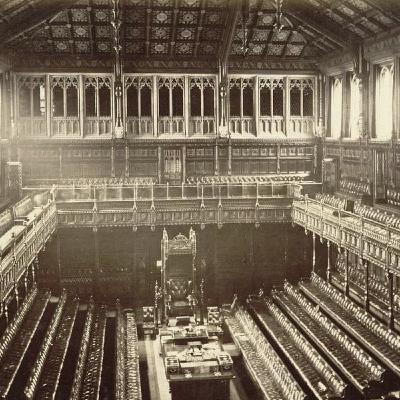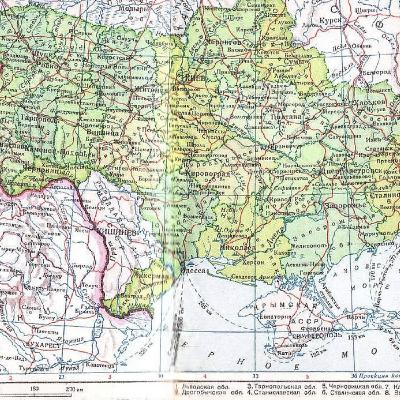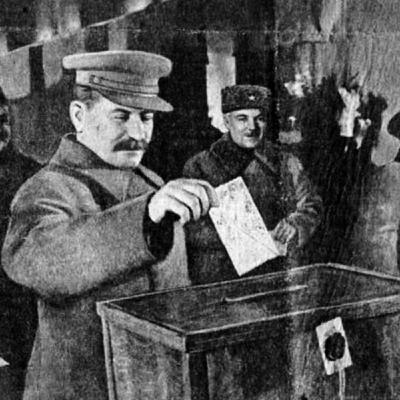Discover The John Batchelor Show
The John Batchelor Show

The John Batchelor Show
Author: John Batchelor
Subscribed: 4,353Played: 2,519,094Subscribe
Share
Description
The John Batchelor Show is a hard news-analysis radio program on current events, world history, global politics and natural sciences. Based in New York City for two decades, the show has travelled widely to report, from the Middle East to the South Caucasus to the Arabian Peninsula and East Asia.
5000 Episodes
Reverse
HEADLINE: GAIUS & GERMANICUS IN LONDINIUM 91 AD: Reclaiming James I as the True Founding Father. Preparing to see a mock battle staged by centurions in Londinium, Gaius and Germanicus discuss the unappreciated legacy of James I (James VI of Scotland), asserting he is the true founding father of the United States. James I, an intellectual king who took the throne in 1603, faced challenges from the powerful Spanish Empire over territorial claims in the New World. When the Spanish ambassador complained about incursions near Chesapeake Bay, James I gave an "opaquely professional" response, disclaiming crown involvement and calling it "private business." This non-committal stance prevented war and allowed colonization to proceed. By 1618, he solidified this by granting a charter to the struggling Virginia colony. His light management established self-governance, setting the course for both modern Britain and the United States.
1901 OLD HOUSE
Retry
HEADLINE: GAIUS & GERMANICUS IN LONDINIUM 91 AD: The "When Russia Wins" War Game and NATO's Empty Shell. Gaius and Germanicus continue their discussion, reflecting on how Woodrow Wilson's 14 points led to catastrophe. They then play the "paranoid NATO dream" war game, "When Russia Wins." The scenario posits that in 2028, after the 28-point plan is implemented, Russian forces occupy Narva, Estonia, but remain static. NATO fails to invoke Article 5 due to a lack of consensus, especially after Washington washes its hands of the conflict, effectively ending the alliance. Germanicus argues NATO is an "empty shell," designed only for nuclear confrontation, not hybrid warfare or lesser contingencies. While Ukraine has made peace with not joining NATO, Russia accepts Ukraine pursuing EU membership for its necessary economic connection. Russia's goal in the Baltics is primarily the protection of ethnic Russians and access to the Baltic Sea.
1940
HEADLINE: GAIUS & GERMANICUS IN LONDINIUM 91 AD: Discussing the Pragmatic 28-Point Plan for Ukraine. Broadcasting live from Londinium, where the Thames is too rough for boatmen due to the grim weather, Gaius and Germanicus analyze the 28-point plan aimed at ending the Ukrainian disruption. This plan, a multiple of Wilson's 14 points, is driven by an emperor in Washington, and the Kremlin is currently prevailing. The core provision involves the ceding of territory, specifically Donbas, to Russia, followed by Russian-won elections. Unlike the disastrous Versailles Treaty that led to future conflict, the 28 points are deemed pragmatic, solving the issue of ardent Russian nationalists within Ukraine's borders. The plan also prevents Ukraine from joining NATO and offers Russia reintegration into the world order, potentially rejoining the G8. The speakers agree the solution is positive, allowing Ukraine to survive as a sovereign nation while losing only territories that did not want to be a part of it.
1037
HEADLINE: Khrushchev, Hard Power, and Gorbachev's Doomed Reform GUEST AUTHOR: Professor Sean McMeekin 50-WORD SUMMARY: Despite Khrushchev's denunciation of Stalin's crimes (1956), the Soviets pursued hard power politics, motivated by proving their system's superiority. The 1979 invasion of Afghanistan was a destructive strategic error. Mikhail Gorbachev sincerely sought to reinvigorate communism by reducing corruption and improving planning but failed, ultimately misunderstanding that the regime relied on corruption and sheer force to operate.
HEADLINE: Khrushchev, Hard Power, and Gorbachev's Doomed Reform GUEST AUTHOR: Professor Sean McMeekin 50-WORD SUMMARY: Despite Khrushchev's denunciation of Stalin's crimes (1956), the Soviets pursued hard power politics, motivated by proving their system's superiority. The 1979 invasion of Afghanistan was a destructive strategic error. Mikhail Gorbachev sincerely sought to reinvigorate communism by reducing corruption and improving planning but failed, ultimately misunderstanding that the regime relied on corruption and sheer force to operate.
HEADLINE: The Cultural Revolution and the Nihilistic Cult of Youth GUEST AUTHOR: Professor Sean McMeekin 50-WORD SUMMARY: The Cultural Revolution, spearheaded by the Red Guards, was a nihilistic, xenophobic cult of youth. Mao used this violent anarchy to purge rivals and overturn literate civilization, destroying books and attacking professors. Mao also exploited severe tension with Moscow, using anti-Soviet rhetoric as a cudgel against internal opponents and to gain geopolitical influence.
HEADLINE: Mao Zedong, Xenophobia, and the Failure of the Great Leap Forward GUEST AUTHOR: Professor Sean McMeekin 50-WORD SUMMARY: Mao Zedong blended Marxism with fierce anti-imperialism and xenophobia, targeting the "global imperialistic system" and foreign influence. The Great Leap Forward combined elements from The Communist Manifesto, Stalin's collectivization, and competition with Khrushchev. This disastrous experiment, aiming to surpass Britain, led to chaos, famine, and the deaths of 40 to 45 million people.
HEADLINE: Lenin's Violent Innovation: Vanguardism and Revolutionary Defeatism GUEST AUTHOR: Professor Sean McMeekin 50-WORD SUMMARY: Vladimir Lenin, inspired by Marx's violence, adopted vanguardism (professional revolutionaries guiding workers). His innovation was "revolutionary defeatism," arguing imperialist war should be turned into civil war. Lenin advocated a global series of civil wars to usher in the proletarian revolution. Anarchists like Bakunin were prophetic, fearing the resulting state tyranny.
HEADLINE: Lenin's Violent Innovation: Vanguardism and Revolutionary Defeatism GUEST AUTHOR: Professor Sean McMeekin 50-WORD SUMMARY: Vladimir Lenin, inspired by Marx's violence, adopted vanguardism (professional revolutionaries guiding workers). His innovation was "revolutionary defeatism," arguing imperialist war should be turned into civil war. Lenin advocated a global series of civil wars to usher in the proletarian revolution. Anarchists like Bakunin were prophetic, fearing the resulting state tyranny.
HEADLINE: The Centrality of Violence: Babeuf, Marx, and the Paris Commune GUEST AUTHOR: Professor Sean McMeekin 50-WORD SUMMARY: Communism relies exclusively on extreme political violence and the disintegration of governance norms, never the ballot box. Early radical Gracchus Babeuf established a violent precedent, advocating the abolition of private property and the extermination of class enemies. Karl Marx embraced the bloody Paris Commune (1871) as proof that a true revolution required killing class enemies.
HEADLINE: The Philosophical Roots of Communism and the Unmasking at Tiananmen Square GUEST AUTHOR:Professor Sean McMeekin 50-WORD SUMMARY: The Tiananmen Square massacre (1989) unmasked the brutal core of communism, akin to Kronstadt. Karl Marx derived the dialectical concept of history as binary class struggle (oppressors/oppressed) from Hegelianism. Marx defined communism as the "negation of the negation," advocating a violent cataclysm driven by philosophical principles rather than political economy.
Last Decades, Persistent Pain, and Final Rest — Ronald White — In his later years, the severity of Chamberlain's Civil War wound, which he largely concealed, became public through a newspaper account of his surgery. He attempted business ventures without success, realizing his true calling lay in service to others. Remaining active into his 80s, he traveled extensively, impressively reading the Quran in Arabic and the Bible in Greek. Chamberlain died in 1914, essentially becoming the last casualty of the Civil War due to his Petersburgwound.
Share
The Battle of Augusta: Chamberlain's Finest Peacemaking Moment — Ronald White — In 1880, Maine faced a political crisis—the "great countout"—threatening a peaceful transfer of power. Chamberlain was called upon to confront an armed insurrectionist mob approaching the capital. He faced the crowd directly, offering his life, which dramatically defused the crisis—widely regarded as his finest moment. He also continued fighting the "war after the war," successfully advocating for General Warren's vindication.
Chamberlain's Progressive Presidency at Bowdoin College — Ronald White — Chamberlain returned to Bowdoin College as president, respected by figures like Ulysses S. Grant. He immediately advocated for bold institutional changes, declaring the college had "touched bottom." His progressive vision included introducing science, establishing a medical school, and implementing co-education for women—measures that frequently met alumni resistance. Despite administrative pressures, he remained a highly sought-after and eloquent public speaker.
Governor of Maine and Advocate for Reconciliation — Ronald White — Returning home wounded, Chamberlain became a prominent public speaker advocating for national reconciliation rather than continued punishment of the South. He was elected Governor of Maine for four successive terms as a Republican. His administration focused on economic reconstruction and supporting the state's agricultural college. His political career and persistent wound contributed to growing marital strain with Fanny.
The Mortal Wound at Petersburg and the Appomattox Salute — Ronald White — Despite his Gettysburg fame, Chamberlain returned to combat, leading a brigade. At Petersburg in 1864, he sustained a near-mortal wound from a minié ball; two surgeons declared it would prove fatal. He miraculously survived without antiseptic or modern medical intervention. Later, he commanded the surrender ceremony at Appomattox, controversially offering a marching salute to the Confederates, honoring their valor.
The Reality of War and the Defense of Little Round Top — Ronald White — Chamberlain's 20th Maine faced the horrors of war at Antietam and Fredericksburg, suffering severe casualties and effects from a defective smallpox inoculation. During the forced march toward Gettysburg, they received orders to defend the far left of the Union line at Little Round Top. Running out of ammunition, Chamberlain ordered a highly unconventional and successful bayonet charge.
Professor Chamberlain Goes to War and Takes Command of the 20th Maine — Ronald White — After marrying Fanny in 1855, Chamberlain joined the Bowdoin faculty, where he promoted critical thinking among students and witnessed key historical moments, including Harriet Beecher Stowe reading Uncle Tom's Cabin. In 1862, called away from travel plans, he enlisted in the Union Army, declining a high rank to "earn and learn" his way up. He assumed command of the 20th Maine.
The Classical Education and Early Life of Joshua Lawrence Chamberlain — Ronald White — Joshua Lawrence Chamberlain's early life in Maine was shaped by hardy Congregationalist parents who promoted intellectual curiosity and deep faith. He excelled at memorization and entered Bowdoin College after preparation. Chamberlain wrestled with his parents' conflicting desires for him—minister or soldier—and trained in nine languages. He met his future wife, Fanny, while leading the college choir.
Appomattox: Lee's Surrender and the Legacy of Mosby — Patrick K. O'Donnell — At Appomattox, Robert E. Lee rejected guerrilla warfare, disobeying Jefferson Davis's orders in favor of reconciliation and statesmanship. Grant offered generous terms. The surrender was marked by Joshua Chamberlain saluting Confederate General John Gordon, embodying mutual respect. After the war, John Singleton Mosby befriended Grant, became a Republican, and faced harassment in Virginia before later serving as U.S. consul in Chin









The antisemitic police commercial is a huge insult to commonsense. Enforcing the law drops crime. It worked during the 90's. Why not now.
vvpljl6ooo 9jy656uyyyyyy7
The John Batchelor Show offers insightful analysis on global events and history. Highly recommended for anyone interested in in-depth news coverage! Check it out: スプランキー https://play-sprunki.org
The title has nothing to do with the actual podcast. This is sadly an annoying habit that has somehow been taken up. This happens quite often.
hqr1
has nothing g to do with Ukraine. this is a retelling of the Cuban missle crisis.
what impact they will have on international space endeavors. If relevant resources or documentation are intended to accompany the commit, you might want to include a reference like https://mywguportal.com/ to direct users to a related portal or resource. Would you like help editing the commit message or improving documentation next?
The subject matter dosen't match the title. This seems to happen with many episodes.
have you seen the movie "The Castle". it's a great movie about exactly this legal issues.
I love how you incorporate https://misidegameonline.com examples and real-life situations to make your points. This article is a great blend of information and approachability, and I’m sure many will benefit from the knowledge you’re sharing.
there’s a cultural aspect at play; traditional https://mapquestrouteplanner.org values often emphasize saving over spending, particularly in uncertain times.
It would be interesting to see how these plans evolve https://polytrack.org/ and what impact they will have on international space endeavors.
Chang's insights suggest that Xi's leadership https://papaspizzeria2.org/ prioritizes a strict adherence to party doctrine and control over public discourse, contrasting sharply with Gorbachev's attempts at political openness and reform.
In a bold leap of innovation, Test Group engineers embarked on a daring venture: crafting a Frankenstein commercial airplane. Incorporating cutting-edge technologies and components sourced globally, this aviation marvel promises unparalleled efficiency and safety. From the fuselage to the avionics, each element synergizes seamlessly to redefine flight standards. Visit https://www.testgroup.com/ to witness the evolution of air travel, where pioneering meets reliability. Embodying resilience and ingenuity, this Frankenstein creation signifies a new era in aerospace engineering, bridging dreams with reality. Experience the future of flight with Test Group's visionary aircraft, where every journey begins with boundless imagination and precision engineering.
Thecepisodevhad nothing to do with WW2 but Italy's covid response from 2022. Someone is not checking.
ehelp
Who pays this woman?
⦁ This article contains very valuable information for beginners. This is a very informative blog for me, thank you for sharing this blog. . PDS International is also Best Digital Freight Forwarder PDS INTERNATIONAL PVT. LTD
like the news is not control in usa
john you keep pushing the war . Nazy state of Ukraine you're in the wrong side of history.